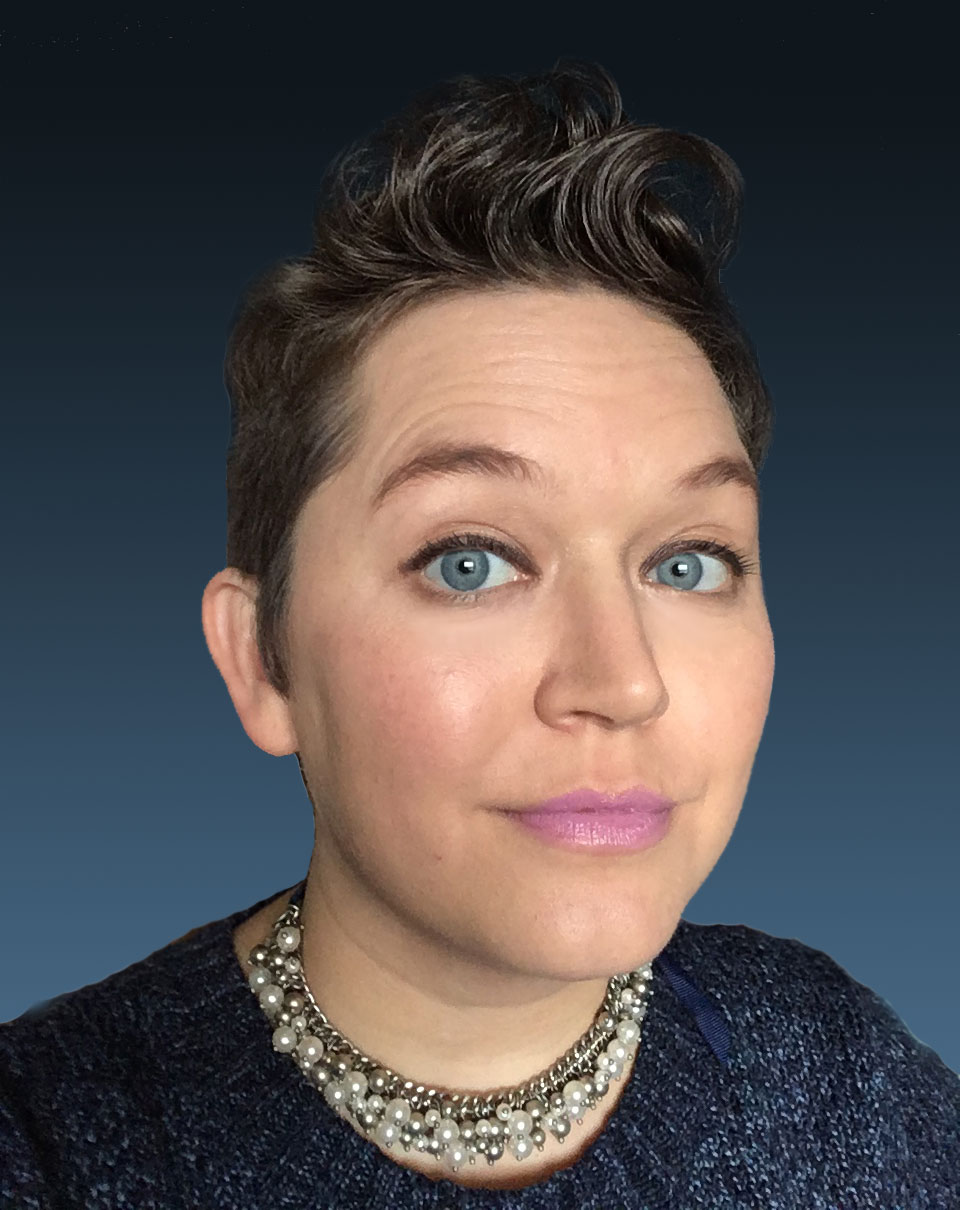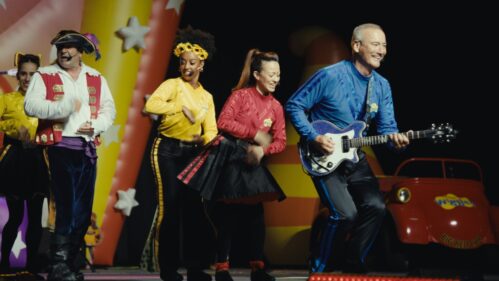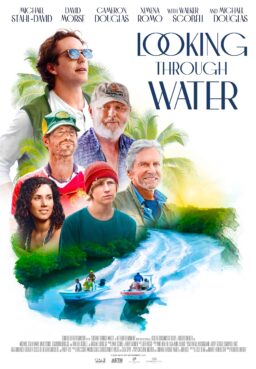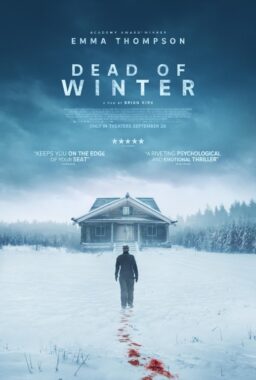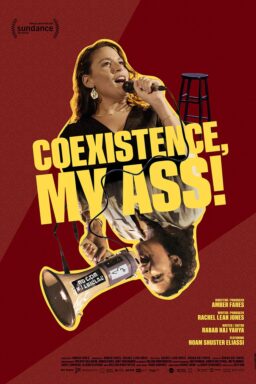How do you turn “Fear Street” into a movie or even three? For decades, YA horror author R.L. Stine has been frightening readers with dozens of spooky stories about teens in peril that often tips into the paranormal. Spoiled for choice, writer/director Leigh Janiak forged a bold new path. Coming off of the critical acclaim of her directorial debut “Honeymoon,” not only did she and her collaborators craft a new narrative that could nestle nicely into the nefarious neighborhood of Stine’s twisted mind, but also they created a trilogy that defies the expectations of slasher sequels, blurring the lines between film and television.
“Fear Street Part One: 1994” kicks off this triad of terror, introducing Netflix audiences to the teens of Shadyside, the local lore of Sarah Fier, and the unexpected ways they collide. Legend has it that Fier was a one-handed witch who was hung for her wickedness. However, her death did not stop the curse she’d laid upon the town’s people. For 300 years, Shadyside has been plagued by horrendous serial killings, each generation giving rise to a new and terrible slasher. When a bloody twist of fate pitches a heartbroken misfit (Kiana Madeira) into the latest chapter of Sarah’s story, she and her friends must not only battle back resurrected slashers but also uncover a cure for the Shadyside curse.
This scary story continues through “Fear Street Part 2: 1978” and “Fear Street Part 3: 1666,” which will be released in successive weeks on Netflix. To properly dig into the mysteries of the “Fear Street Trilogy,” we spoke with Janiak about the path of her adaptation’s making, its unconventional structure, hard-R content, the detour caused by the Fox/Disney merger, and more. So as not to ruin the surprise of the sequels, the first half of the interview is very light on spoilers. The latter half dives deeper into the secrets that thud ferociously at the heart of “Fear Street.”
Tell me about your journey from “Honeymoon” to “Fear Street.”
I’ve loved genre since before I was privileged enough to get the chance to make movies. Horror and sci-fi and all of that has been part of my love of movies forever and ever and ever. Coming off of “Honeymoon,” that movie was very embraced by the festival community, by the horror community. I felt very lucky, very appreciative of that experience, and I was able to start directing. I did television. I did some episodes of “Scream.” I did episodes of “Outcast.” That was great. I was also concurrently hired to write projects with my writing partner, Phil [Graziadei], for the studio systems. It was back in 2017, which is insane to say to you, that “Fear Street” came onto my radar. I had been a fan of the books growing up, and so I was just excited by the whole idea of [adapting them]. When I started talking to my producers at Chernin [Entertainment] a little bit more, I realized that they wanted to try to do something new and groundbreaking, I was even more excited.

Speaking to that, when the producers came to you with the idea of a “Fear Street” movie, what did you think was essential in bringing that book series to the screen?
I wanted it to be scary. I wanted it to be bloody, like all of those things that exist in the Fear Street universe. But more than anything else, I wanted them to feel fun. I wanted it to be a pleasurable experience watching the movie. So even when it was also awful, I still wanted there to be joy, hopefully, in the pleasure of what was happening to these characters, what they were going through, how they were going through it, all of those things. That—more than anything else to me—is the spirit of the Fear Street books. They’re fun to read. You don’t know what’s going to happen next because it could literally be anything. That’s what I wanted to try to preserve in the movies.
“The Fear Street Trilogy” doesn’t function like a standard slasher trilogy, where each film is being pretty self-contained, with the next loosely connected. Your trilogy is far more interweaving than that. Can you tell me how that concept developed?
The idea of releasing a trilogy all in one year sprung from the head of one of my producers, Peter Chernin. When I got hired, that was the core idea. And there wasn’t really more than that at that point of like, “Do we want it to be every four months? Do we want it to be every two months? Do we want it to be every other week?” That that hadn’t been figured out yet. And so, when I was hired, that was so exciting, figuring out like, “What is this?”
Because like you said, a traditional sequel structure, you have a year or you have two years in between, and you can retread and revisit the tropes, the things that audiences loved in the first one or the second one. But, if we are going to try to get audiences to want to be engaged with these three movies in a short period of time, how do we do that? And how do we make it not just a gimmick? How do we make it organic to the story and have that motivate the reason for the structure? So, that was like the primary challenge for me and my fellow writers (Phil Graziadei, Zak Olkewicz, Kyle Killen, and Kate Trefry) when we first started. Where we ended up feeling like we cracked it was that we were doing something a little new that was this hybrid between movies and traditional television content.
What I really wanted to try to do is tell each movie so it’s its own thing, it’s its own world, there’s its own tension happening, and resolve that. So, the journey of this movie has some kind of satisfying ending there, but then also it’s pushing us forward. Not all of the threads are tied up. We still have that bigger narrative that we’re driving forward, and you really do need to watch the second one and then ultimately the third one to get all of the pieces of the puzzle.
Was part of the thought process mirroring what R.L. Stine did in his books, where chapters end in cliffhangers?
The cliffhanger aspects of the books was huge. It’s so fun to get to that and you’re like, “Oh, shit, I just have to turn the page or I have to click on the next movie,” or whatever. So, I really wanted to preserve that. When we first were making the movies, they were going to be theatrical with Fox, and I didn’t want it to just be cliffhanger. I wanted to have some kind of story resolution for each movie. So, in movie one, we’re dealing with the kids trying to survive these killers that are coming after them inexplicably. So, I wanted to be able to resolve that tension in some way, even though we were hopefully deepening the mystery. And with movie two, I wanted to focus on the sisters’ storyline and make sure that that was getting resolved, even though there was a bigger thing happening. Because I didn’t want audiences to feel like, “Oh, you’re just tricking me into buying a ticket.” So, that was really important. The fun of the cliffhanger and like, “Oh no, what’s going to happen?” we definitely were trying to go for that too.
At what point in the movies’ making, did it go from, “We’re going to release these three films in theaters in the same year,” to, “It’s going to be on streaming one week apart?”
That was pretty late in the process. When we were greenlit and when we were filming, and even for like a large part of post-production, we were still at Fox. We knew that the Disney merger was in the air. I think it was when we were in the middle of filming that the merger became real. And for a while, we didn’t really know exactly how that would affect us. I was thinking in the back of my head like, “Disney doesn’t really make horror movies. They make a lot of things in a great way, but R-rated horror is not really their jam.”
Right. That must have been terrifying.
Yeah. That was nerve-wracking. But I believed in the movies and the experience of the movies. Everyone was very excited about them. So, I knew ultimately, we would be fine. But it was worrying, like, “Oh no, what is going to happen? Am I going to have to—” I don’t even know. There’s no way to make these not R-rated.

Right.
It was in early pandemic days where everything was up in the air in the industry, I would say. And there had already been discussions and talks with like, “What is the future of Fear Street at Disney?” And Netflix had been raising their hand since before we even had the green light. Netflix wanted to make these movies while we were still developing the scripts. It’s just Fox and Chernin controlled them at the time. So, when Netflix sensed that there was an opening here, they did not hesitate. And honestly, it was so amazing for me, my dream come true. Netflix knew what they needed to do to support the movies and to figure out like, “How are we going to do this new thing…” At Fox, we had never really cracked what is this actually going to be. How far apart is this going to be? And Netflix right away, it was like, “We could do this, we could do this, we could do this.” It was just very exciting.
The way the first the film ends, there’s a trailer for the next movie that plays immediately. Was that always part of the concept, or was that something that came to the table when Netflix signed on?
That was something that I had always included. That was something that I worked on with one of my editors, this guy named Hunter [Carter], who specializes in teaser trailers. And so, I thought that no matter what, whether or not the movies ended up being theatrical or they were streamed all together in one night or a week apart or whatever, it was important to have the, “Coming soon,” and, “Previously on,” [which kicks off the sequels]. It felt throwback-y to me and just fun and a good way to get hyped up for the next one.
You mentioned there would be no way to recut these out of an R-rating. Why was the R-rating so important?
“Fear Street,” the books—if we were grading them or rating them—wouldn’t be R-rated necessarily. But when I was 14 or 15 picking up these books, they felt edgy. They felt like I was doing something subversive. That, to me, was important to preserve in the movies.
Further than that, thinking about movies one and two, and—elements of movie three—these are slasher movies. There are great PG-13 horror movies, but to make a slasher movie, it has to be bloody. You have to kill people in a terrible way. It’s just so important to be baked into the DNA of what these movies were. That level of gore and violence, combined with the language of the teenagers and keeping it authentic to what I feel like is an authentic teenage experience, at least, was really, really important to me.
I’d like to move into a heavy spoiler territory. “Fear Street Part 1: 1994” establishes a theme about systemic oppression and how that essentially “curses” marginalized groups, like the residents of Shadyside. So, can you tell me how this idea developed in the making of the trilogy and through the successive films?
One of the reasons I love horror movies is because of exactly what you’re talking around, which is that you can make these really fun, violent, crazy things, but also make them about something. So, that was our thing. It was about systemic oppression. It was about systemic rot. It was about what it means to be told by society that you’re “the other” and that you’re an outsider. To feel like that was reality when it really isn’t, when really there’s something else happening here. And there’s a way to change your world.
That was the big idea that we came up with when we were in these early stages of figuring out the scripts. That was the world of Shadyside: just full of people that had been marginalized for their sexuality, for their race, for their socioeconomic status, for just being different. We’re telling the story of characters that usually would be dead very quickly [in horror movies].
Because that was built into this core narrative, we were able to then cast and tell stories that hadn’t been told in mainstream or as often as they should be. That was extremely exciting to me. We’re telling a queer love story. And it’s not like there weren’t queer people that existed in the ’90s, in the ’70s, in the 1600s. It’s just that this wasn’t represented in film necessarily. And if it was, they were getting killed really quickly.
Watching the trilogy, it was thrilling to see People of Color and LGBTQIA+ characters, who would usually be cast aside to up the body count, get to have their moments in the sun. They actually got to drive the story. It underlines what you’re talking about in the rest of the films. Grown-ups in the movie blame drugs. They blame the poor for their circumstances. They victim-blame people who die. There’s this whole idea that if the Shadysiders just had a better attitude, they could—
They could lift themselves up by their bootstraps. Yeah.
Right! The first film sets that up, and then Cindy’s story [in “Fear Street Part Two: 1978”] really drives that home. Cindy Berman tries hard to claw her way out of Shadyside with a good attitude and a polo shirt makeover, and it’s just not enough.
Oh, I’m so happy, you really get it. Yeah. This is exactly everything that we were talking about and hoping for. And like I said, it is the narrative. It is the central story of Fear Street. So, it wasn’t just like stunt casting. It had to be this. It was built into the whole thing.

Speaking to the queer love story, why is that so important to the overarching narrative?
As with “Honeymoon,” I love love stories, and I love destroying love stories. Once we decided that both of our main characters were going to be women, we wanted to make sure that their relationship felt, first of all, true to what it means to be young and in love. Which, it’s not always perfect. There are weird things that have to go through, where you are personally in your life and figuring out your identity, not to mention you’re just teenagers. So, we wanted that.
And then, also, we spent a lot of time, me and my writing partner [Phil Graziadei], who is gay, discussing what it meant to be queer in the ’90s, which is very different than what it means now. We wanted to be true to that, too, of saying it wasn’t so easy. And it’s not okay [as a screenwriter] to just be like, “Oh, it’s like a straight love story, but they’re two girls.” There’s nuance to this and in understanding that reality. It’s not easy for Sam [to come out], and I don’t think it ever is, now or then. But we wanted to preserve that and make sure that we were telling a specific story, not just a straight story that happened to have two women in it.
Also, I’m obsessed with this idea of the mistakes of history and cycles of time, which I think is clear in the movies. So, we show what happened in 1666 with Sarah and Hannah and how that world certainly was not ready for them. Then, we give Deena and Sam a chance of being like, “Okay, they weren’t ready then, but now is the time for us. And we’re going to win, and we are going to rise up, and we are going to change things.” That was really important and exciting.

Speaking of the double casting, you have the performers from the first two films come back to play other characters in 1666. How do you hope viewers will interpret this choice?
It’s this weird thing that we’re doing, right? So, Deena is embodying the spirit of Sarah Fier, but she’s not conscious as Deena. She’s just experiencing this moment. She’s mind-melded with this experience in the past. I didn’t overthink exactly what was happening as far as the other characters, except that the idea is supposed to be that we’re seeing their ancestors. So, it’s Kate’s great-great grandma, or however many generations ago that would be. And we’re to feel that spirit of possibly ancestral things or reincarnation or whatever it may be.
And even generational trauma.
Exactly. Oh my God, very good. It’s awesome talking to you, I’m like, ‘F**king yes. Right. Yes.’
In the final film, we learn Sarah Fier is not the witch that she’s touted to be. It made me think of how we’re in a moment right now of looking back on maligned women of the ’80s, ’90s, 2000s and reevaluating the stories that made them infamous. Was there anybody in particular you had in mind when coming up with Sarah’s story?
No, it wasn’t like a specific figure, it was more like “history is told by the winners,” and that’s not always exactly the truth of what happened. So, I think that that was more the motivating thing of: we get told these stories, but where does the truth lie? Where is that really? So, that is what’s behind Sarah’s story. The fact that here’s this man, Solomon Goode, who had preyed upon the prejudices and fears of the town and was able to make her the scapegoat. And this was a story that just was not told in this world of Shadyside. She was remembered as this witch, but she was really just an innocent girl who was in love.

Regarding the Goode reveal, the actors who played Nick Goode, did they know the whole time what his arc was?
They did. Yes. We had a lot of time talking about it and feeling out what was Nick in ’78 feeling, because this was his first time taking the mantle and sacrificing a Shadysider. And where’s his brain? Because he’s also falling in love with young Ziggy. And at the end of the day, he chooses the family, he chooses that he’s going to continue this evil.
Ash [Ashley Zukerman], who played Nick and Solomon, was amazing in that. He also helped guide Ted [Sutherland], who was playing young Nick. It was an interesting thing because we wanted it to feel like there was a reason for Nick to be in that first movie, that you understood like, “Oh, there’s more to this story here.” And then when you got to the second movie, hopefully you understood like, “Oh, he went through this traumatic thing when he was a teenager. And maybe he made a mistake by not standing up for this girl that he loved.” And then hopefully what the audience feels going into the third movie is, “Okay, Nick Goode is going to ultimately team up with these Shadysiders, and he’s going to right the wrongs of his past.” And then, that’s not at all the reality. That was the hope for Nick. And I think both of them did an amazing job of kind of keeping that nuance and keeping his character complex and not just mustache twirling.
Plus, it subverts the trope of the idea of the “hero cop” that plays into so many narratives.
Totally.
The trilogy ends with a shot of someone grabbing the witchcraft book. I’m not going to ask you who grabs the book, but continuing with that kind of “Fear Street” vibe of cliffhanger, are there clues in the film that layout who that is?
No. That was supposed to be like a bit open-ended, of this idea that like, “Okay, this particular deal with the devil is over, but the devil still exists.” And so, who else is still out there that could be interested in this? What could it be? Those are definitely things that we’re thinking about for the future.
Sure. Because you’ve set up so many cool killers’ stories, of which we’ve seen glimpses. Do you have plans or hopes to extend the Shadyside story?
Definitely. One of my earliest conversations with Chernin when I first started coming aboard was describing the potential of this, the way I saw it was as Horror Marvel. I just feel like there’s so many cool opportunities to tell the story of the milkman, to tell the story of Ruby, and a bunch of other killers that we’ve never talk about. Beyond that, just the idea that Shadyside is kind of in this place of—to reference “Buffy [The Vampire Slayer]”—like the Hellmouth. There is something happening in this town where the devil is lurking. And then, hopefully continuing to explore what does it mean when evil is just out there hanging in the open? Could that be for another trilogy as well? I don’t know. I’m really excited about that possibly.
The Fear Street trilogy is now playing on Netflix.
